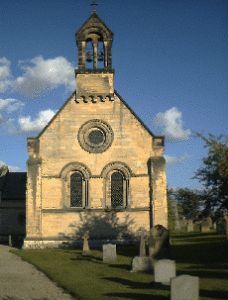 The original church at Barton-le-Street was probably built about 1160. Rebuilt in 1871 it still contains much of the stone from the original building. The renowned carvings around the church suggest that masons and stone-carvers who had worked on the cathedrals at York or Durham may have been employed here.
The original church at Barton-le-Street was probably built about 1160. Rebuilt in 1871 it still contains much of the stone from the original building. The renowned carvings around the church suggest that masons and stone-carvers who had worked on the cathedrals at York or Durham may have been employed here.
When the Priory of the Holy Trinity in Micklegate, York was founded, the Lord of the Manor Sir Ralph Pagnel, gave the church at Barton with a fair amount of land to the prior and convent there. By 1302 however, the patronage seems to have passed to the de Grey family who were by then lords of the manor of Barton-le-Street.
Close to the door and the font is a list of the names of rectors, continuous from 1280 (the first recorded appointment of a rector, Robert de Aete) up to 1964. The replacement of Norman names by more English sounding names from 1425 onwards is indicative of the history of the area.
A sketch of the old church in the vestry at the West end was created from a photograph showing the appearance of the exterior of the church before it underwent its restoration. It shows that the roof pitch was rather different and that heavy buttresses were in place on the North wall, indicating structural trouble. The doorway originally was on the South side and was moved to the shadier North side to protect the stone from the weathering action of sun, frost and rapid thawing, which crumbled the stone exposed in the South.
The church is in the middle of the village adjacent to the village green. The village has the only church hall in the benefice and regularly hosts village and benefice events.
Until 1931 there was a railway station in the village served by the North Eastern Railway.
Detailed information on St Michael and All Angels Barton-Le-Street can be found by clicking on the link (PDF document).